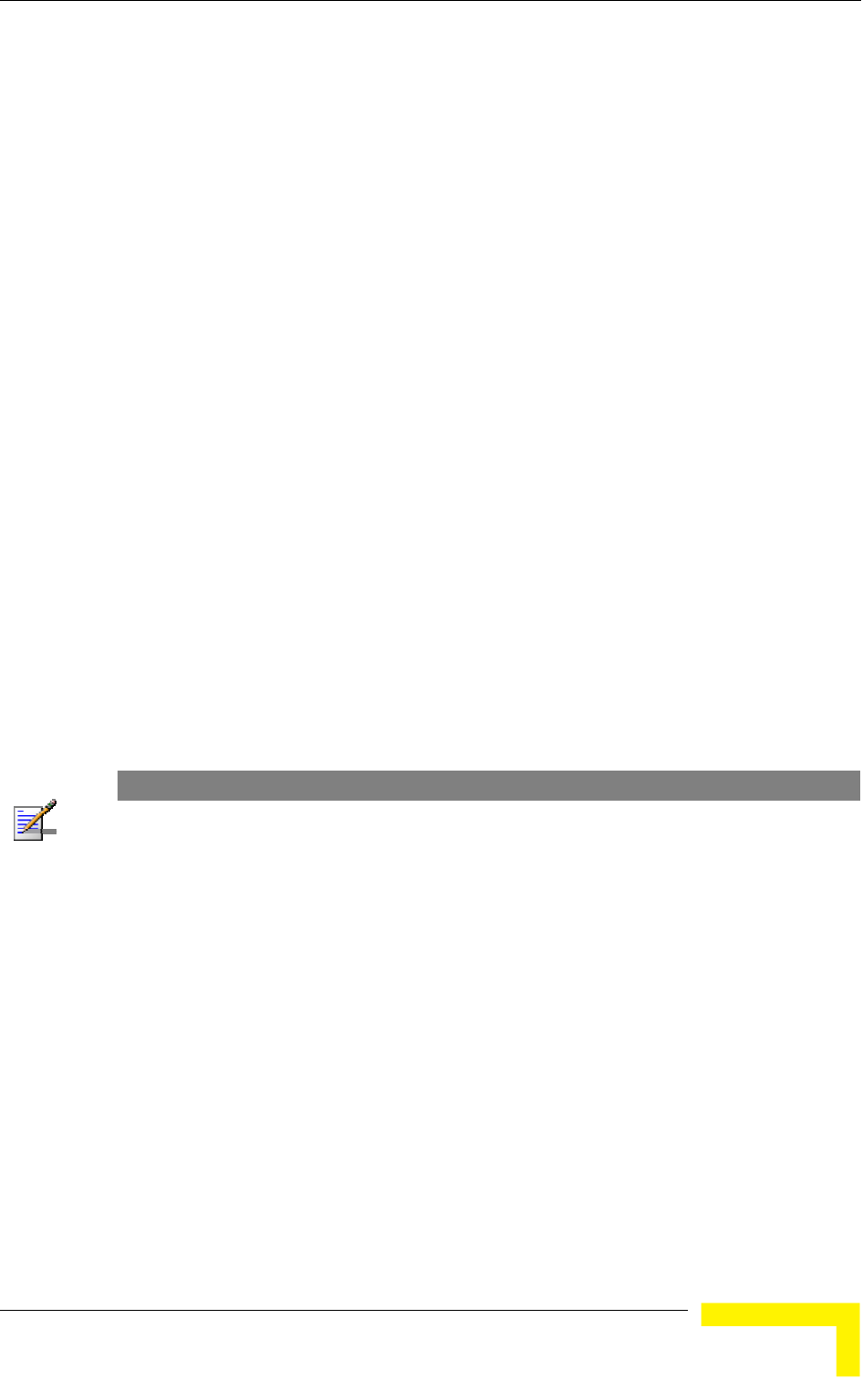
Menus and Parameters
Operation and Administration
191
When a frame is identified as an eligible candidate for concatenation, it is marked
accordingly and will be processed according to the following:
If there is no concatenated frame designated to the same destination unit in
the queue:
If the hardware queue is empty – the frame is transmitted immediately.
Otherwise (the queue is not empty) – the frame is inserted to the queue as
a concatenated frame.
If a concatenated frame designated to the same destination unit exists in the
queue:
If the combined size of both frames is above the maximum allowed
concatenated frame size – both frames are transmitted as two separate
frames.
Otherwise (the combined frames size is below the maximum size) – the
new frame is added to the concatenated frame. If the number of data
frames in the concatenated frame has reached the maximum allowed
(applicable only if the destination unit uses SW version 3.0 or 3.1) – the
concatenated frame will be transmitted to the wireless medium. Otherwise
– the concatenated frame remains in the queue (until the hardware queue
becomes free).
NOTE
When a frame is marked as a candidate for concatenation, it will be transmitted as a concatenated
frame. If it is not bundled with another data frame before transmission, it will be a concatenated
frame with a single data frame (Concatenated Frame Single). If it is bundled with two or more data
frames, it will be a concatenated frame with either double data frames (Concatenated Frame
Double) or more data frames (Concatenated Frame More).
The Concatenation Parameters submenu includes:
4.2.6.5.9.1 Concatenation Option
The Concatenation Option enables or disables the concatenation mechanism.
The default is Enable.
4.2.6.5.9.2 Maximum Concatenated Frame Size
The Maximum Concatenated Frame Size parameter defines the maximum size (in
bytes) for a concatenated frame.
The range is:


















